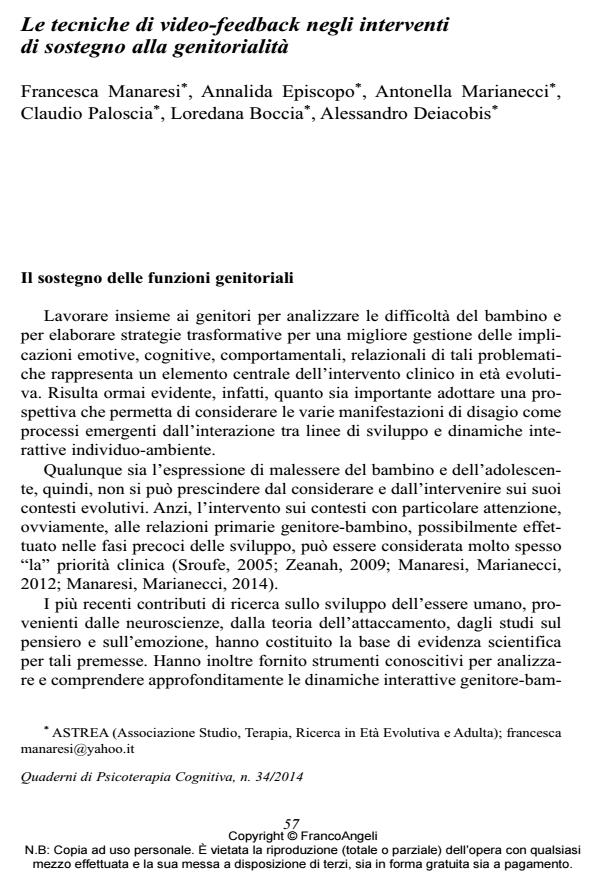Working with Video-feedback in parenting intervention
Journal title QUADERNI DI PSICOTERAPIA COGNITIVA
Author/s Francesca Manaresi, Annalida Episcopo, Antonella Marianecci, Claudio Paloscia, Loredana Boccia, Alessandro Deiacobis
Publishing Year 2014 Issue 2014/34
Language Italian Pages 22 P. 57-78 File size 215 KB
DOI 10.3280/QPC2014-034005
DOI is like a bar code for intellectual property: to have more infomation
click here
Below, you can see the article first page
If you want to buy this article in PDF format, you can do it, following the instructions to buy download credits

FrancoAngeli is member of Publishers International Linking Association, Inc (PILA), a not-for-profit association which run the CrossRef service enabling links to and from online scholarly content.
The way the parents take care of their children has a significant influence on emotional, cognitive, behavioural and relational development. Studies on early childhood showed the influence of early interactive processes on emotional regulation and on emotional, cognitive and social development of the child. The study of interpersonal motivational systems allows us to consider the influence of the different motivational dynamics in parent-child relational processes during development. A multidisciplinary approach characterizes most of the models of clinical intervention on parenting. In this context, clinicians have to consider very accurately all dimensions involved (psychological, relational and social) to organize effective interventions that meet specific priorities and resources available. The use of video and video-feedback is now common practice in clinical work on parenting and an evidence based intervention.
Keywords: Parenting, evidence-based intervention, video-feedback, interpersonal motivational system.
Francesca Manaresi, Annalida Episcopo, Antonella Marianecci, Claudio Paloscia, Loredana Boccia, Alessandro Deiacobis, Le tecniche di video-feedback negli interventi di sostegno alla genitorialità in "QUADERNI DI PSICOTERAPIA COGNITIVA" 34/2014, pp 57-78, DOI: 10.3280/QPC2014-034005